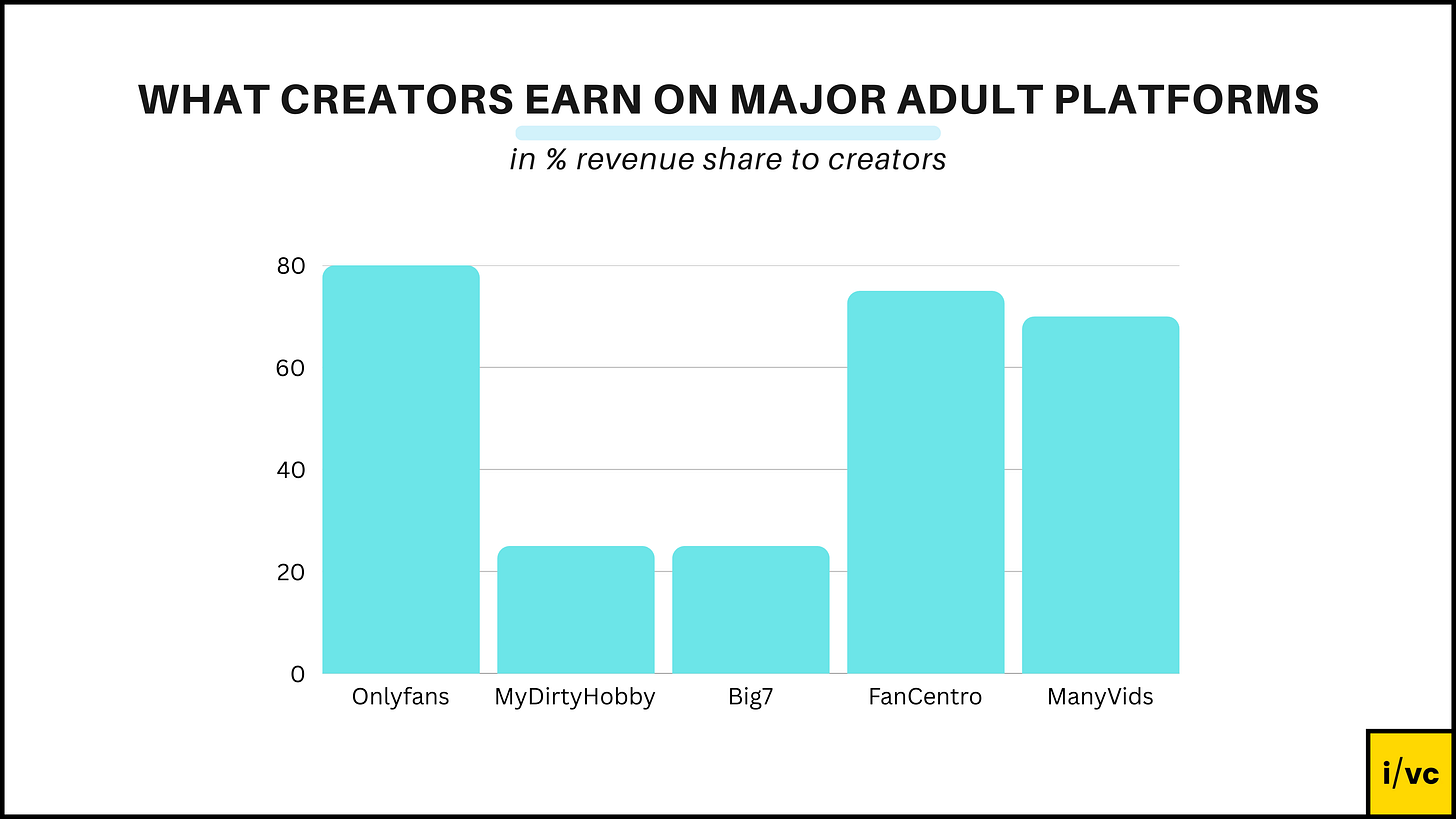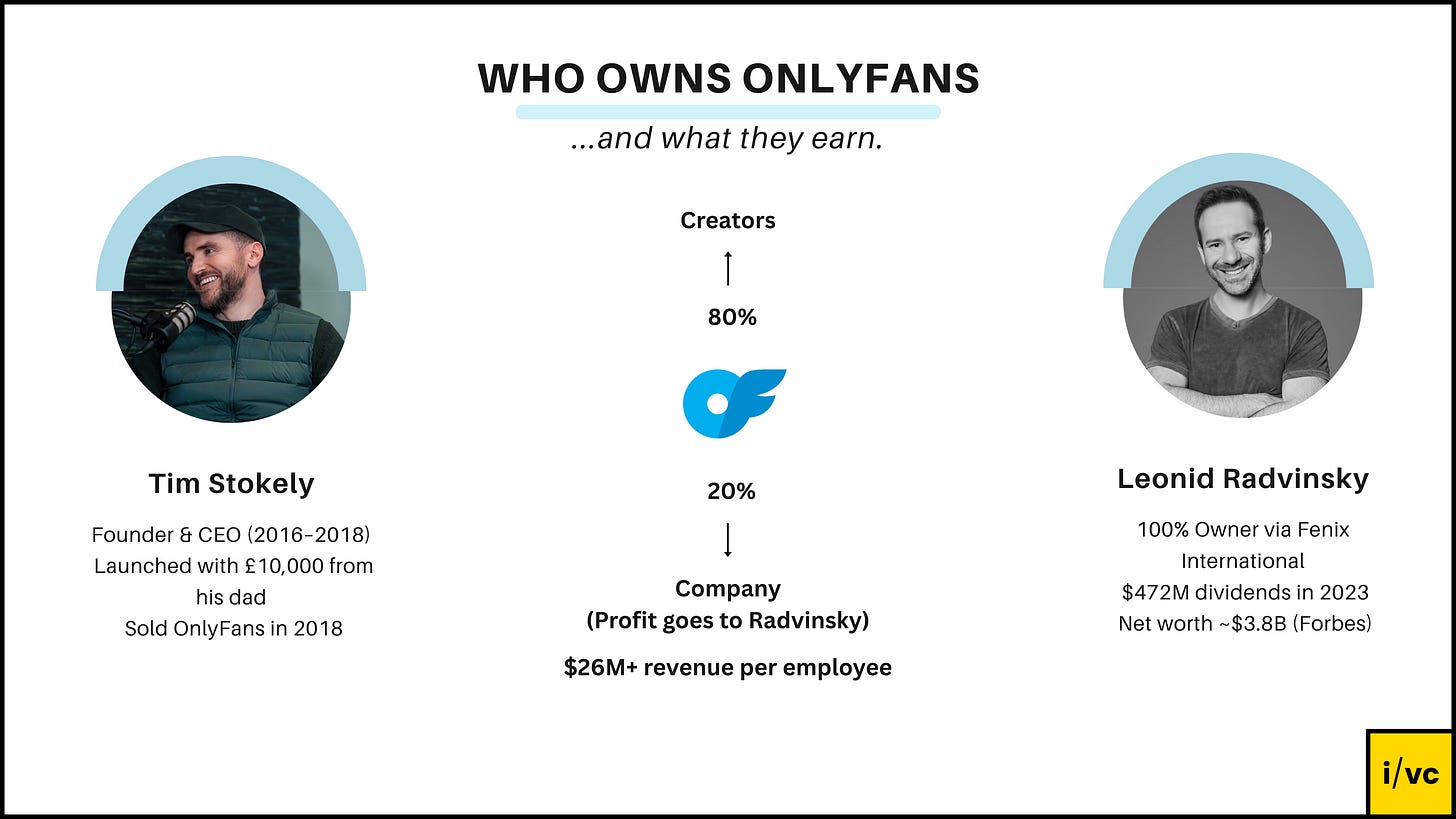How Onlyfans Quietly Built a $7.9B Empire
The unlikely story of a bootstrapped platform that redefined adult content monetization.
Let’s be honest: if someone told you in 2015 that one of the most influential tech platforms of the next decade would be built around adult content, have no app, and be run (at first) like a family business... you’d probably laugh.
And yet: welcome to OnlyFans. A subscription platform that quietly rewired how adult content is monetized – and made billions doing it. No VC funding, no product-led growth fairytale, just a brutally effective business model and the right timing.
Today, I want to walk you through how OnlyFans pulled this off. Spoiler: it's not just about porn. It's about control, monetization, disintermediation – and timing so good it looks strategic (but probably wasn’t).
The problem: Free porn killed the money
In the early 2000s, the porn industry was booming. Literally. VHS turned to DVDs, then to online streaming. Paywalls worked. Then the “Tube sites” came along.
YouPorn, Pornhub, XHamster (I’m sure you’ve never heard those names before) – platforms where anyone could upload anything. Think YouTube, but for nudity. The business model? Free content + ads.
The result? A race to the bottom. Studios went broke. Performers stopped earning. Piracy became the norm. Consumers expected everything for free. And creators had zero leverage.
Sounds a lot like what happened to music, right? Napster killed the CD star.
Enter Tim Stokely: Britain’s most persistent adult-tech founder
Tim Stokely wasn’t new to adult content. Before OnlyFans, he launched multiple platforms in the fetish and custom-video niche. None of them worked.
But he learned something: there’s demand for personalized, niche content – and users are willing to pay for the right experience.
In 2016, after borrowing £10,000 from his dad (a former investment banker), Tim launched OnlyFans.
It was supposed to be like Patreon, but with a twist: creators could post whatever they wanted, and fans would pay a monthly subscription. The twist would soon become the twist.
OnlyFans launched as a general-purpose creator platform. But in late 2017, it was struggling. Low traction. Nobody cared.
So Tim made a radical choice: allow !explicit! content.
Suddenly, adult entertainers, camgirls, amateur creators – all had a safe-ish, legal-ish place to monetize content directly. The platform took 20%, and creators kept 80%.
This was the moment everything changed.
Within a year, user numbers 10x’d. And by the time the pandemic hit, OnlyFans was perfectly positioned for something huge.
The pandemic hits. OnlyFans explodes.
While other industries were collapsing, OnlyFans was thriving. COVID was the perfect storm:
People stuck at home
Traditional sex work was shut down
Performers needed income
Fans were craving connection
From 13 million users in 2019 to over 80 million by end of 2020. Creator numbers exploded too – from a few hundred thousand to over 2 million.
It’s the money, stupid!
Here’s the kicker: most adult platforms take 50–75% of creator earnings. OnlyFans? Just 20%.
That’s why everyone moved there. Better margins. More control. Direct fan relationships.
And yeah, some creators made millions. But don’t be fooled – most don’t. As always, platform economics are a power law: the top 1% makes 99% of the money.
But even for smaller creators, the proposition was better than any studio deal.
No app, no problem
You’d think a multi-billion dollar platform would have an app, right? Nope.
OnlyFans has no iOS or Android app – and probably never will. Apple and Google don’t allow explicit content in their app stores. That’s a massive constraint. But it also saves OnlyFans the 30% cut.
Instead, creators funnel fans from Instagram, Twitter, Reddit, even Pornhub. It’s clunky, but effective. And weirdly, it gives the platform more control over its ecosystem.
Also: it’s one less point of censorship.
Fun fact: OnlyFans makes over $26 million per employee, which technically makes it more profitable per head than Google, Meta, or Goldman Sachs. Not bad for a company with no app…
Yes, it started as a family business...OnlyFans wasn’t built by a valley tech bro. It was built by a guy working with his brother and his dad.
Tim was CEO. His brother handled operations. His dad did the finances.
Later, in 2018, Stokely sold the company to a mysterious figure named Leonid Radvinsky – a millionaire who’d made his fortune in adult cam sites.
Radvinsky took a backseat publicly, but not financially. In 2023 alone, he earned $472M in dividends. Forbes pegs his net worth at $3.8B.
The dark side
Let’s not sugarcoat this: OnlyFans has issues. Real ones.
Reuters’ investigation in 2024 uncovered disturbing cases: coerced performers, underage content, revenge porn. Some creators report daily copyright theft and reposts on forums like Reddit.
OnlyFans says it works with law enforcement and uses ID checks. But the scale makes it hard to police. Millions of profiles. Billions of posts. It’s not easy.
And once something leaks? It’s out there forever.
OnlyFans cracked the code of monetizing adult content in the age of free. Not by inventing a new model, but by giving creators more control and a better cut. Combine that with cultural shifts, a pandemic, and good timing – and you’ve got a unicorn that never asked for funding.
But it’s also a reminder: just because something’s profitable doesn’t mean it’s uncomplicated.
OnlyFans gave many people independence. It also made others vulnerable. It’s capitalism, content, and controversy – all rolled into one platform.
And somehow… it all started with £10,000 from dad.
Cheers 🥂
~Jannis
Let me know if you like these in-depth analyses and which company you would like to see next! :)










Be bold and be creative! Embrace abundance!
More of those deep dives please!